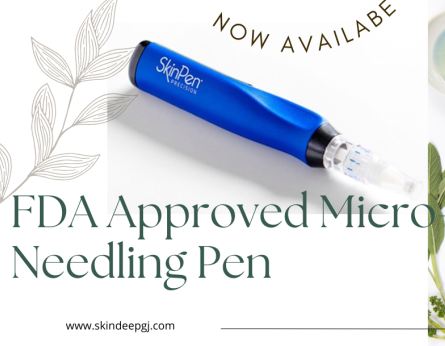Chemical Peels
Welcome to the Skin Deep blog! I am Jo Ann Seele, the owner of Skin Deep. I’ve been a licensed Esthetician since 1993. I have worked in the beauty industry since 1986. I am licensed and certified to work with plastic surgeons and dermatologists with advanced certifications in microneedling, microdermabrasion, chemical peels, acne treatments, dermaplaning, aromatherapy, pre/post facial surgical care, laser technician, laser safety, and pro-aging treatments.
Chemical Peel = Smart Peels/ Why Would I Want One?
Exfoliating the skin to enhance its appearance dates to ancient Egypt and remains a popular practice today. Various methods, from mineral scrubs to chemical peels, have been used across different cultures to treat the skin. Currently, mild to moderate chemical peeling techniques are preferred over more aggressive treatments, leading to the rise of Smart Peels by Lira. These peels are now considered the gold standard, offering over 15 solution options tailored to various skin conditions.
Cellular turnover is a natural process where dead skin cells from the outer layer, the stratum corneum, are shed and replaced by new cells from the basal layer of the epidermis. In healthy skin, this turnover occurs roughly every 28 days until around age 30, after which the process slows by about ten days per decade. During menopause, skin renewal further diminishes. This slowdown can lead to fine lines, wrinkles, acne, and a dull, dry complexion.
Chemical peels work by exfoliating dead, dehydrated skin cells. They break down the protein structures with acids. This process stimulates new cell production, including fibroblasts, which boost collagen production and enhance skin health. By controlling the rate of exfoliation, chemical peels can reduce superficial imperfections and promote healthier-looking skin.
Chemical peels are effective for several skin issues, including aging, acne, and hyperpigmentation. They improve the appearance of aging skin by increasing exfoliation and collagen production. For acne sufferers, removing dead skin cells—contributing to breakouts—helps reduce bacteria and excess oil. Additionally, chemical peels can address hyperpigmentation by exfoliating melanin-rich cells and promoting the generation of fresh, healthy skin cells.
Peels vary in intensity: superficial peels target the outer epidermis, medium-depth peels reach the papillary dermis layer, and deep peels penetrate the reticular dermis. However, stronger is not better. Peels, when applied correctly, offer significant benefits with fewer side effects and minimal downtime. Smart Peels by Lira are designed with minimal downtime and are usually administered in a series of treatments spaced a few weeks apart.
Prepping the skin properly before any resurfacing treatment is crucial. Typically, skin brightening products and retinol are used a month before and always post-procedure to minimize the risk of post-peel hyperpigmentation and ensure optimal results.
Don’t forget to incorporate SPF into your daily routine. Its use is necessary before and after the procedure to protect your skin.

